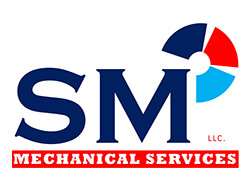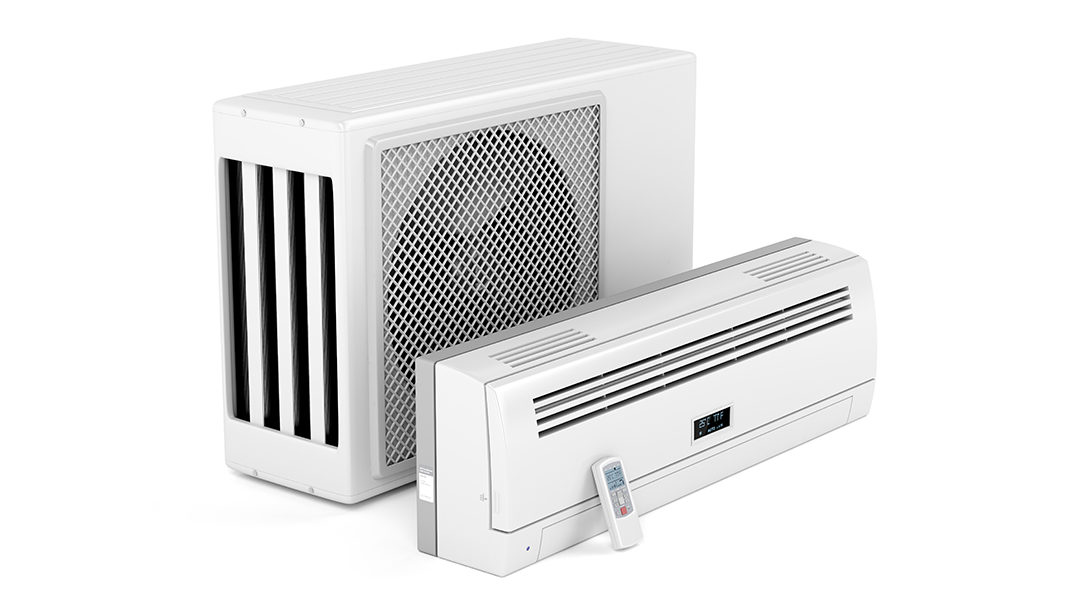Every summer, homeowners should make sure that their air conditioner system is ready for hot, humid weather. Your AC system will not keep you sufficiently cool unless all the elements of the air conditioning system work properly. The AC experts at SM Mechanical Services, West Hartford’s reliable HVAC company, want you to understand your AC from top to bottom.
Your AC consists of four main types of equipment:
- The indoor unit that captures heat within your home
- The outdoor unit that radiates the captured heat into the outside air
- The connecting system that allows the refrigerant to cycle between the indoor and outdoor units
- The components that control and facilitate the operation of the AC system.
Let’s consider each AC component in depth.
The Outdoor Unit
The outdoor unit consists of the compressor and condenser coils. The compressor’s role is to take the hot gaseous refrigerant and compress it into a liquid. The refrigerant heats up under pressure and radiates heat into the environment.
At least a foot or two of air separates the outdoor unit from the exterior wall. The space between the outdoor unit and the house prevents the outdoor unit from radiating back inside.
The Compressor
The compressor uses electrical power to force the refrigerant into a smaller space. A gas under pressure will often heat up and turn into a liquid.
This process uses considerable energy. It becomes less efficient when other parts of the AC system are clogged, worn out, or broken. The compressor is also expensive to replace, so keeping it in good condition is a sound investment.
The Condenser Coils
Refrigerant enters the outdoor unit once it exits the house and passes through the condenser coils. Heat radiates through the walls of the condenser coils. The refrigerant loses heat to the outside world because it is much hotter than the air around it.
The Indoor Unit
Once the refrigerant loses heat in the outdoor unit, it travels to the indoor unit. There, it can once again absorb heat from the house’s interior.
Expansion Valve
As the refrigerant enters the house, it passes through the expansion valve. As the refrigerant passes through the valve, it expands. As a result, the refrigerant loses heat and continues to the evaporator coils.
If this process happens too quickly, it can cause the refrigerant to cool too rapidly. Consequently, ice may form on the evaporator calls. The expansion valve regulates the flow to prevent icing.
The Evaporator Coils
Once the refrigerant enters the evaporator coils, it absorbs heat and becomes a gas. Once it warms and expands, it leaves the house and enters the condenser coils.
Additional Elements
The Refrigerant
None of the elements of an air conditioning system work without the refrigerant. The most common refrigerant is R-22 (Freon). Refrigerant circulates continually through the refrigerant lines. In the absence of refrigerant, the AC system would not be able to cool the air but only circulate warm air throughout the house.
If the system is working, the coolant never leaves the system, no matter how long it runs. However, if there is a leak in the system, the refrigerant levels will decline. A small leak can take months to deplete the refrigerant, while a large leak can drain the lines in minutes.
The Refrigerant Tubing
When refrigerant is not within the condenser coils, evaporator coils, or the expansion valve, it passes through copper tubing. Temperature fluctuations can cause damage to tubing and eventually create leaks, so it is advantageous to have a professional inspect the refrigerant lines periodically.
The Fan or Blower
In central air or mini-split systems, a fan or blower circulates cool air throughout a house. Without the blower, the house would not get enough cool air. Furthermore, the evaporator coils would get too cold, incurring possible damage.
The Air Filter
The air filter in an HVAC system keeps the air free of dust and debris that could otherwise reduce air quality. If the filter becomes clogged, it could give the indoor air an unpleasant odor, contribute to respiratory problems, and obstruct airflow. In mini-split systems, each wall unit has an air filter.
The Temperature Sensors and Thermostat
An air conditioning system will not regulate temperature properly if the thermostat cannot turn the cycles on and off. A broken thermostat could cause the system to fail to turn on or to overwork. Therefore, the rooms will become too cold and increase wear on the system.
Thermostats depend on heat sensors to gauge whether room temperatures are in the desired range. If the heat sensor is defective, miscalibrated, or placed near a heat source, the thermostat may behave abnormally.
Furthermore, if a central air conditioner is too small to heat a home or office, it might cool the house inconsistently. The heat sensor in one room might detect cool air while other rooms are intolerably hot.
The Ductwork in Central Air Systems
Central air systems use large ducts to spread climate-controlled air throughout homes or other types of buildings. For best indoor air quality, have your ducts cleaned every so often to remove dust, mold, or other contaminants.
The Room Units in Mini-Split Systems
Unlike central air conditioning, mini-split systems deliver cool air to individual wall-mounted units. These systems contain thermostats, temperature sensors, air filters, and other elements of air conditioning systems. To best maintain them, have a professional technician regularly inspect these components.
Keep Every Part of Your Air Conditioner at Its Best with SM Mechanical Services
Don’t settle for quick fixes. You deserve an air conditioning contractor who fully understands your air conditioning system as a whole.
The SM Mechanical Services team has expertise with all elements of air conditioning system technology. We have the tools and experience to provide comprehensive central AC services, heating services, and plumbing repair in the Glastonbury, CT, area.
For 24/7 help with your air conditioning system, call our talented team at (860) 296-5100.

